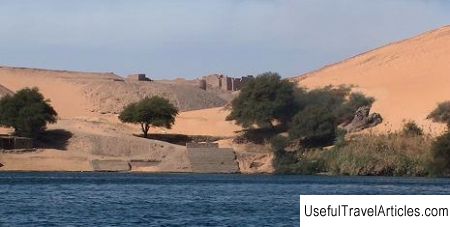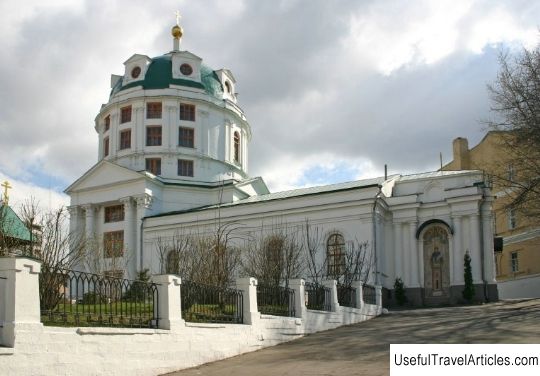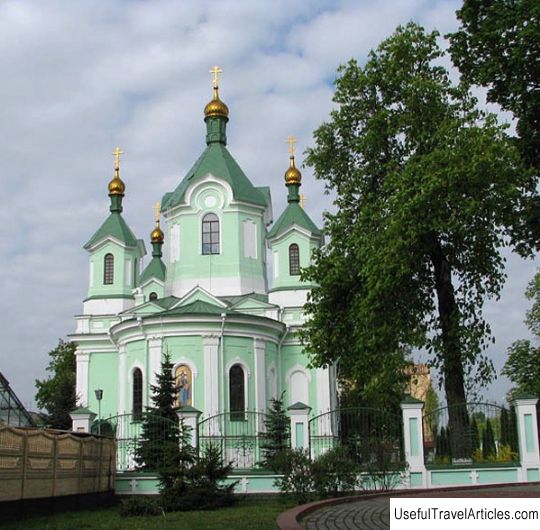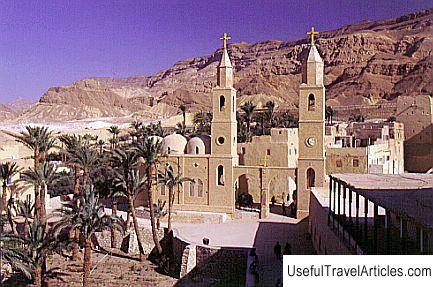Monastery of St. Simeon description and photos - Egypt: Aswan
Rating: 7,9/10 (100 votes) 
Monastery of St. Simeon description and photos - Egypt: Aswan. Detailed information about the attraction. Description, photographs and a map showing the nearest significant objects. The name in English is Monastery of St. Simeon. Photo and descriptionThe abandoned monastery of St. Simeon the Stylite is one of the largest and best preserved Coptic monasteries in Egypt. The monastery received the name of Simeon from archaeologists and travelers, before the Arab and Coptic sources called it `` Anba Mosku '' Hatre (Khidry, Khadri, Khadra). According to legend, Anba Hatre got married at the age of eighteen, but immediately after the wedding he met a funeral procession, which amazed him very much. He decided to remain celibate and later became a disciple of one of the local ascetics. After eight years of asceticism, he went into the desert and devoted himself to studying the life of St. Anthony. Construction of the monastery-fortress began in the 6th century, but it is believed that it was not completed until the 7th century. the age of the building is determined by the paintings in the rocky caves. The original structure had walls ten meters high and towers, which were used as observation posts. From the platform at the top of the hill, the monks could see for several kilometers in all directions. The monastery was rebuilt in the 10th century, but destroyed in 1173 by Saladin for fears that it might serve as a refuge for Nubian Christians who raided southern Egypt. By the end of the 13th century, the complex, which at one time was one of the largest monasteries in Egypt and housed over 1000 monks, was abandoned. The reason for this was the drying up of nearby water bodies and the frequent raids of marauders from the desert. Although most of the monastery lies in ruins, much has been well preserved. The church is of significant architectural interest, being an example of the construction of elongated convex Christian structures in Egypt. The tower, which served as a residential complex, is also unique. In addition, the large number of tombstones in the monastery cemetery are invaluable sources for studying early Christian tombstones in the Nile Valley, and the monastery furnaces are invaluable for researching archaic Aswan ceramics. The monastery is divided by a rock into two natural terraces. The platforms are surrounded by a relatively thin, six-meter trapezoidal wall with two gates for access to each terrace. This wall in the lower part was made of rough stone, the upper one was made of adobe bricks, and sentinels were on duty in the tower. It is assumed that in ancient times the walls were much higher than ten meters, today you can see an insignificant stone section of the wall, the brick has long been destroyed. The lower terrace houses the original rock-cut caves of the saints, a church with a baptistery, as well as accommodation for pilgrims, an eastern entrance gate and a defensive tower. This is followed by a courtyard and a vestibule leading to a monastery with vaulted roofs. The inner temple was built no later than the first half of the eleventh century, it is the oldest of its kind in Egypt. Only its lower part has survived to this day. According to the documents, the temple had a nave and two side aisles; the domes were octahedral, varying in size. A separate room at the east end of the south aisle served as a baptistery. A rock grotto (an ancient Egyptian tomb, as it was found out later) in the western part of the northern aisle of the church, was used by monks as a living quarters. It may have been the home of Anbal Hatre himself. Behind the eastern wall of the church are several monastic cells, each with three stone beds. A number of frescoes from the 11th-12th centuries have survived, but most of them are badly damaged or even destroyed. One can discern the image of Christ on the throne with a book on one knee, his right hand is raised in blessing, next to it is a human figure with a square halo in a prayer pose, below this scene the walls are decorated with arches and sails. The floor of the temple is paved with burnt bricks, on which there are traces of seven adobe rings that were the bases of the seats. On the upper terrace, there is a massive three-storey building that dominates the ruins. Inside there were separate cells for monks, a refectory, a kitchen and several rooms. In addition, found: an oil press, granite millstones, a mill and a bakery, a wine press, warehouses,           We also recommend reading Sventoji description and photos - Lithuania: Palanga Topic: Monastery of St. Simeon description and photos - Egypt: Aswan. |




